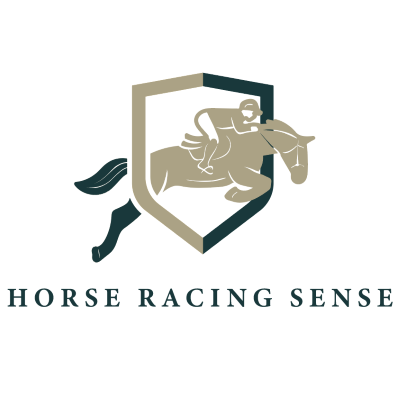Last updated: April 13, 2025
The early life of a foal is a critical period in equine development, yet questions often arise about what to call them and how they grow. Whether you’re a seasoned horse owner, an enthusiastic admirer, or simply curious, this guide answers your essential questions about foals.
Drawing on my 25+ years of hands-on experience raising racehorses—supported by veterinary and academic insights—it covers foal terminology, developmental milestones, and proven ways to help them thrive.

What Is a Baby Horse Called?
The simple answer to “what is a baby horse called?” is foal. A foal is a young horse, male or female, from birth until it turns one year old.
Once the foal’s gender is known, more specific terms apply. A colt refers to a male foal, while a filly refers to a female foal. These gender-specific terms are generally used until the horse reaches four years of age.
Curious about the differences between colts and fillies? Visit Colt vs. Filly: What’s the Difference?
A baby horse is called a foal. This term applies to any young horse, male or female, under the age of one.
Quick Insight: Once the gender is known, terms like colt (male) and filly (female) are often used.
Terminology for Young Horses
Understanding these common terms helps clarify a foal’s developmental stage and gender.
| Term | Definition | Age Range |
|---|---|---|
| Foal | Young horse of either gender | Birth – 1 year |
| Colt | Male horse | Birth – ~4 years |
| Filly | Female horse | Birth – ~4 years |
| Weanling | Foal weaned off mare’s milk | ~4 – 6 months |
| Yearling | Horse between one and two years old | 12 – 24 months |

Exploring the world: A baby horse discovering its surroundings in the pasture.
Stages of Development in the First Year
The first year of a foal’s life is full of critical developmental milestones—each stage comes with its own nutritional, social, and behavioral needs. Understanding these phases can help ensure a foal grows into a healthy, confident horse.
Birth to 1 Month: Neonatal Stage
This initial stage is vital for survival. A healthy foal should stand within 30 to 60 minutes of birth and begin nursing within two hours. Nursing during this window is essential for consuming colostrum, the mare’s first milk, which provides antibodies that support the foal’s immune system.
Normal newborn vital signs:
- Heart rate: Around 60 beats per minute (bpm) at birth, rising to 80–100 bpm within the first few hours. The initial increase is a natural response to the stress of birth and gradually stabilizes.
- Respiration: Can reach up to 80 breaths per minute immediately after birth, settling to a normal range of 30–40 breaths per minute within the first day.
- Temperature: 99.5°F to 102.1°F — the normal range for healthy foals.
The foal should pass its first feces, known as meconium, within three to four hours. Delays in any of these milestones can indicate complications and require prompt veterinary attention.
For helpful reminders during foaling season, refer to Important Foaling Tips from UK Extension.
1 to 3 Months: Early Growth and Social Play
During this phase, foals become increasingly curious and energetic. They begin interacting with their environment, mimicking their dam’s behaviors—such as grazing, nuzzling, and responding to sounds—and developing essential social skills by playing with their dam and, if available, other horses.
By two to three weeks of age, foals will begin nibbling hay and grain. Creep feed, a nutrient-dense ration specifically formulated for foals, can be introduced between six and eight weeks to support their rapid growth and supplement the declining nutrient value of mare’s milk.
For a more detailed look at this stage, visit Foals: Baby Horses Development Guide.

4 to 6 Months: Weaning Period
As foals become more independent, they begin transitioning from milk to a solid diet. At this stage, they are referred to as weanlings.
Common weaning methods include:
- Abrupt weaning: Immediate, full separation from the mare.
- Gradual weaning: A more phased approach that allows the foal and dam to adjust over time, often reducing stress for both.
In my experience, gradual weaning over a few weeks results in calmer foals and mares, especially in pasture settings. It’s especially important during this phase to maintain social interaction with other horses and continue gentle daily handling and basic training to support emotional resilience and behavioral development.
If you’re caring for an orphaned foal, read Feeding Orphaned Foals – University of Minnesota Extension.
6 to 12 Months: Yearling Phase
By six months, most foals have been weaned and are continuing to grow rapidly. Now referred to as yearlings, these young horses benefit from structured routines that promote healthy development.
Effective care at this stage includes:
- Turnout for physical exercise
- Basic halter training
- Regular grooming
- Gentle leading and handling
Providing structure and consistency helps prepare the foal for future training. If you’re curious how this age relates to human development, check out Comparing Horse Age to Human Years.
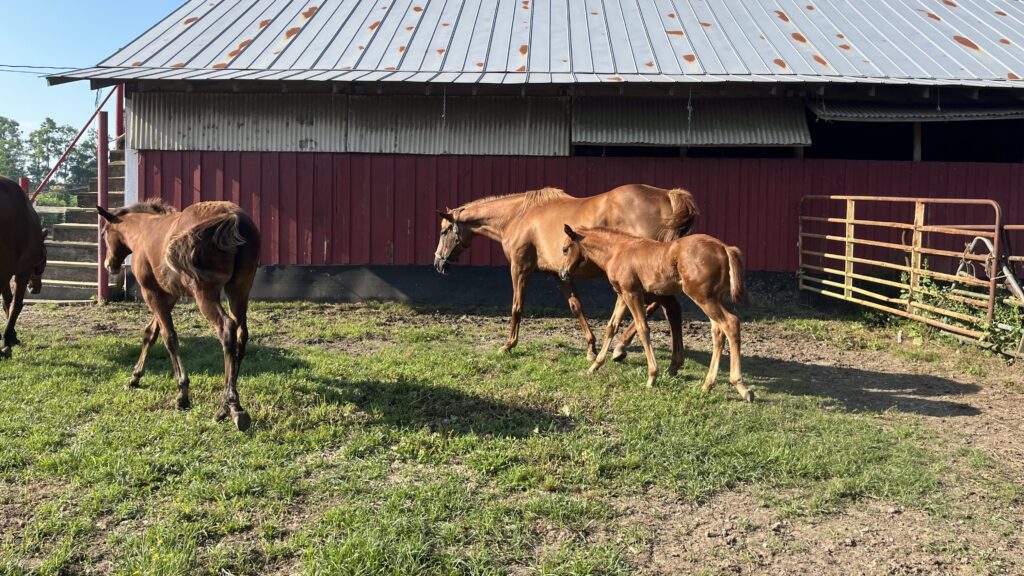
How to Care for a Baby Horse
Caring for a foal involves more than feeding and turnout—proper health monitoring, nutrition, socialization, and a safe environment are key to raising a confident, healthy horse.
Nutrition
Nutrition is the foundation of healthy development in a foal’s first year, and it begins immediately after birth.
- Colostrum in the first 12–24 hours is essential. It provides passive immunity from the mare and helps protect the foal from early infections. Make sure the foal nurses within this critical window.
- Nursing frequency is high in the first week, typically 6 to 10 times per hour. Observing nursing behavior helps ensure the foal is feeding effectively.
- Introduce creep feed between 2 and 3 months of age. Introduce creep feed between 2 and 3 months of age. This supplement helps meet the foal’s growing nutritional needs as the mare’s milk becomes insufficient on its own.
- Expert Tip: From my 25+ years of experience, I’ve found that introducing creep feed at around 6 weeks works best when the foal is already mimicking the dam’s feeding behavior. This is a great sign that they are ready to explore solid food.
- Provide clean water and high-quality hay at all times. As the foal starts to nibble and gradually consumes more solid food, these become essential components of its diet.
Want to support long-term soundness through nutrition? Visit the Equine Nutrition Guide: Joint Health & Soundness.
Health Monitoring
Closely observing your foal each day and staying proactive with veterinary care helps ensure a healthy start to life.
- Daily Observation: Watch for signs of alertness, a strong appetite, frequent interaction with the mare, and consistent movement. Signs of illness include coughing, nasal discharge, lethargy, diarrhea, or reluctance to nurse.
- Veterinary Check-ups: Schedule an initial vet exam shortly after birth to confirm health status. Your veterinarian will also guide you through the proper vaccination schedule and routine health protocols.
- Monitor Vital Signs: While daily checks aren’t necessary unless you suspect a problem, it’s helpful to know what’s normal:
- Heart rate: 60 bpm at birth, rising to 80–100 bpm
- Respiratory rate: up to 80 breaths per minute at birth, stabilizing to 30–40
- Temperature: 99.5°F to 102.1°F
Any significant deviation should prompt a call to your vet.
- Hands-on Grooming Checks: Light daily grooming sessions are not only good for bonding but can also help you spot swelling, cuts, parasites, or heat in the limbs early on—often before a visual inspection reveals anything.
For practical guidance, visit Daily Horse Grooming: A Great Way to Detect Health Issues.
Early intervention often prevents small issues from becoming serious problems. I remember spotting a tiny scrape under a filly’s jaw during one of our early grooming sessions. I cleaned the area, applied a topical antibiotic, and monitored it. It healed quickly—but without that daily hands-on check, it could’ve become something much worse. That simple routine built trust and likely spared her an infection.

Socialization
Proper socialization is crucial for the foal’s behavioral development and long-term manageability.
- Interaction with the Mare: The dam teaches natural equine behaviors, offers security, and establishes the foal’s early understanding of herd dynamics. Foals should have unrestricted time with their dam during their first months.
- Interaction with Other Horses: Once the foal is old enough, exposure to other compatible horses enhances social learning, helps the foal understand herd roles, and reduces the risk of behavioral problems later in life.
- Positive Human Interaction: Gentle handling from an early age builds trust and improves the foal’s response to future training. Activities like grooming, haltering, and leading should be introduced gradually and consistently.
A well-socialized foal with horses and humans is much easier to train and manage later in life. To better understand how horses express themselves and behave within a herd, see Horse Characteristics: Physical, Behavior & Facts.
General Care Practices
In addition to nutrition, health, and social needs, several routine care practices support overall well-being:
- Foot Care: Schedule regular hoof checks and trimming with a farrier. Early hoof balance contributes to soundness and conformation.
- Parasite Control: Follow your veterinarian’s deworming recommendations, typically beginning at 4–8 weeks of age and continuing at regular intervals.
- Safe Environment: The foal’s pasture or stall should be clean, dry, and free from hazards. Watch for broken fences, holes, or sharp objects that could cause injury.
By focusing on these foundational aspects of care, you’ll help your baby horse grow into a strong, healthy, and well-adjusted adult.
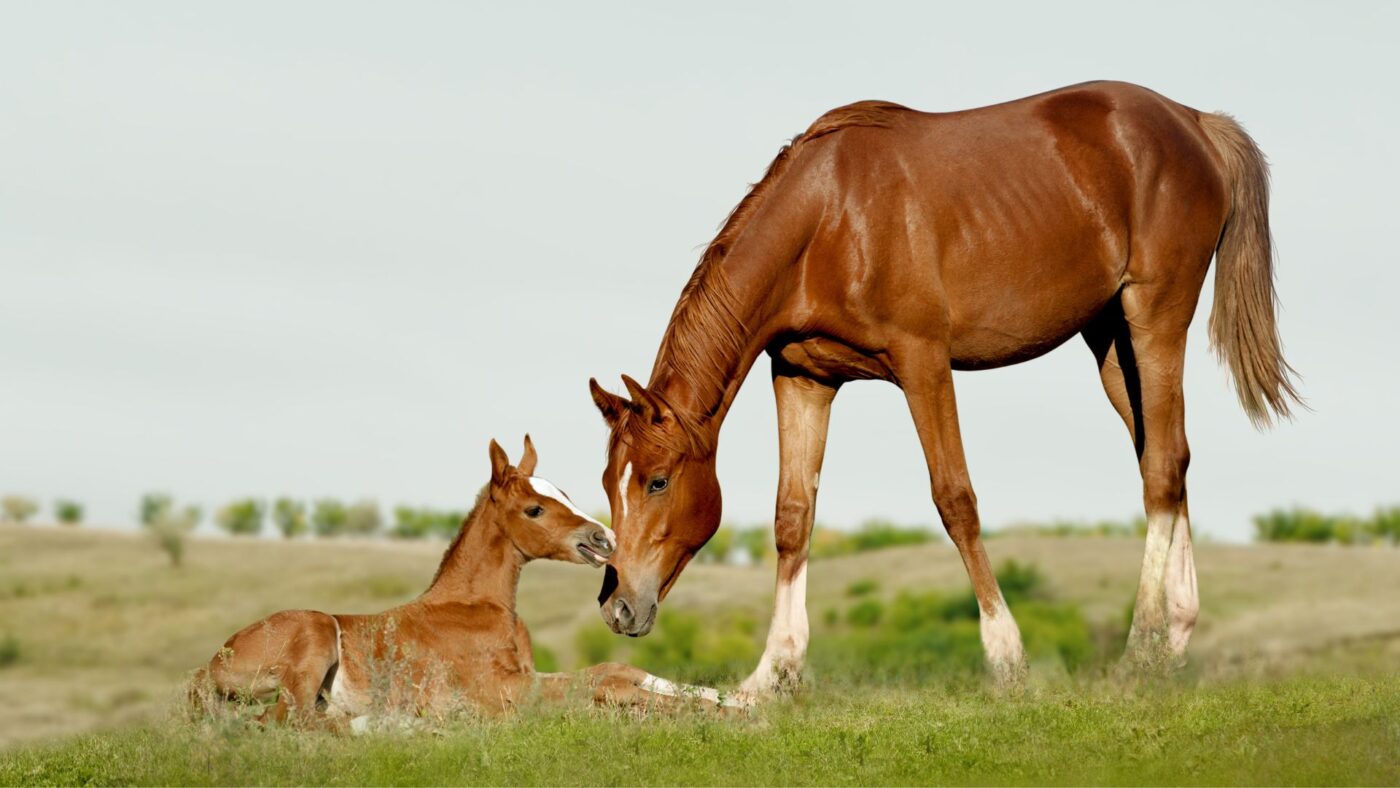
FAQs About Baby Horses
What is a baby horse called?
A baby horse is called a foal. This term applies to young horses of either sex from birth until they are one year old. Once the foal’s gender is known, a male foal is called a colt, and a female foal is called a filly.
Do foals change color as they grow?
Yes, it’s common for foals to change color as they mature. Many shed their initial “foal coat” around 3 to 4 months of age, revealing their permanent adult coat color.
When are foals typically weaned from their mothers?
Most foals are weaned between 4 and 6 months of age. However, the exact timing can vary depending on factors such as the foal’s health, size, and the behavior of the mare.
Are baby horses born with teeth?
Yes, foals are typically born with some of their baby teeth, usually the central incisors. Additional baby teeth will emerge during their first week of life.
When do baby horses start walking?
Healthy foals usually stand within 30 to 60 minutes of birth and begin walking shortly after. By two hours, most can move around with surprising coordination, especially compared to other livestock species.
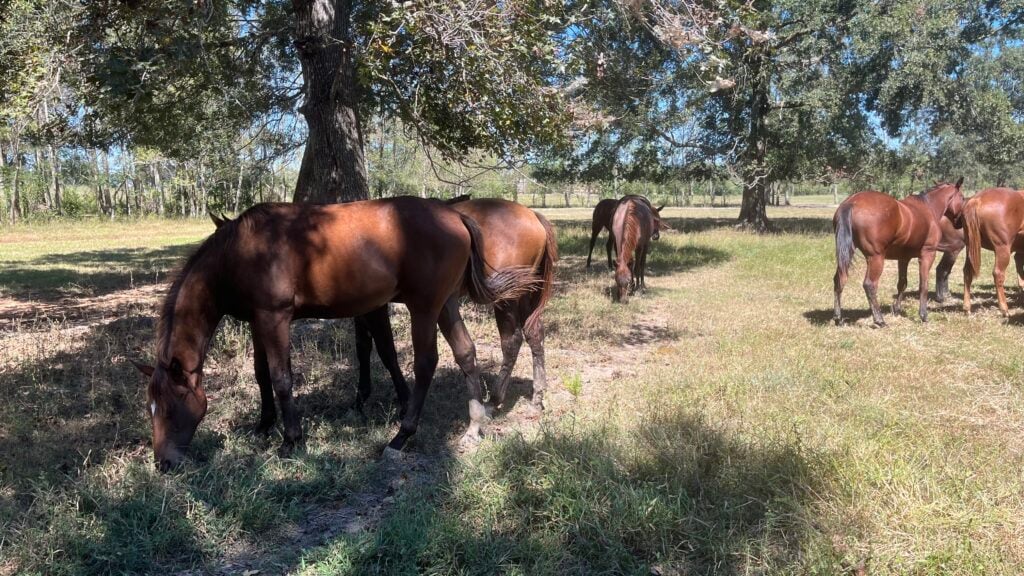
Yearlings grazing in a pasture, enjoying their growth journey.
Checklist for New Foal Owners
Enjoy this YouTube video from ‘Homestead Horsemanship,’ of two playful foals.
Training a Baby Horse: Tips for Foal Handling & Behavior
Training a foal is an investment in their future behavior and performance:
- Halter Breaking: Introduce the halter slowly, allowing the foal to get used to wearing it.
- Leading: Teach the foal to walk beside you with gentle encouragement and rewards.
- Groundwork: Exercises like standing tied and basic desensitization lay the foundation for future training.
One of my colts, Soldier, was particularly headstrong during halter training; he was very head shy. Patience and positive reinforcement turned him into a well-mannered yearling ready for advanced training.

Conclusion
Foals are more than just cute—they’re remarkably adaptive, fast-developing animals that require attentive care and thoughtful handling. From learning the right terminology to managing nutrition, training, and health, your involvement in a foal’s first year lays the groundwork for a healthy, confident horse.
In my 25+ years raising racehorses and foals, I’ve found that no two are exactly alike—but every one of them teaches you something new.
Have you raised a foal before? What was your most memorable moment?
We’d love to hear your story—share it in the comments, and don’t forget to join our mailing list for more expert-backed insights on raising happy, healthy horses.
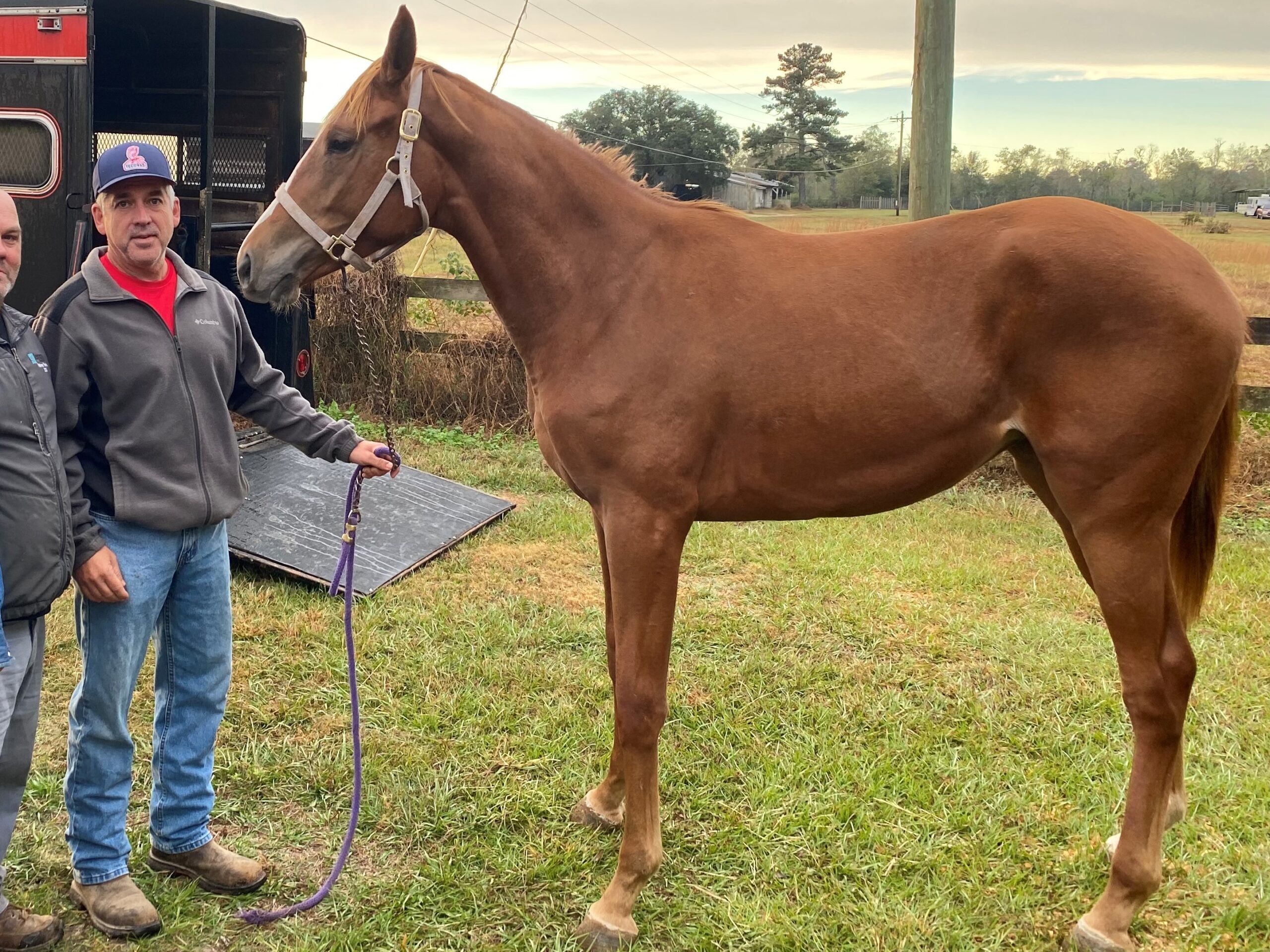
About the Author: Miles Henry
Lifelong Horseman | Racehorse Owner | Published Author
Miles Henry brings over 25 years of hands-on experience training and owning Thoroughbred racehorses. Raised with Quarter Horses and Appaloosas, he’s spent a lifetime learning from horses—on the track, in the barn, and in the field. Today, he runs a small but successful racing stable in Louisiana and shares real-world insights on HorseRacingSense.com, helping horse owners, fans, and bettors navigate the sport with confidence.
📚 Books: View Miles’s books on Amazon »
🎧 Podcast Guest: Animal Tales Ep. 32 |
YouTube Interview
📩 Newsletter: Sign up for racing tips and horse care advice »
🔗 Follow Miles:
Twitter |
Facebook |
YouTube
